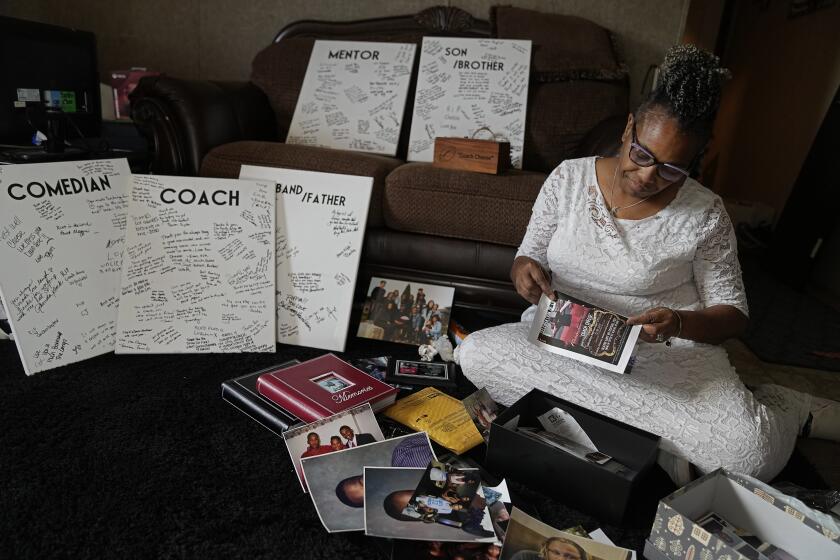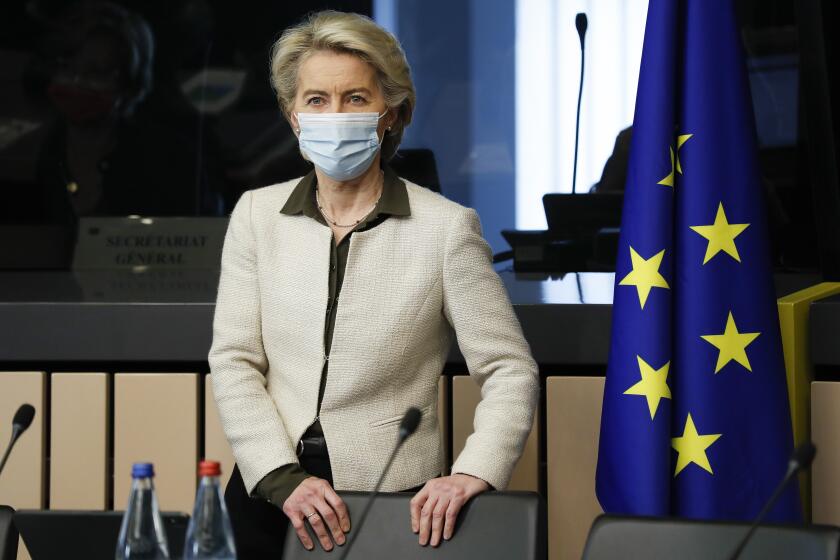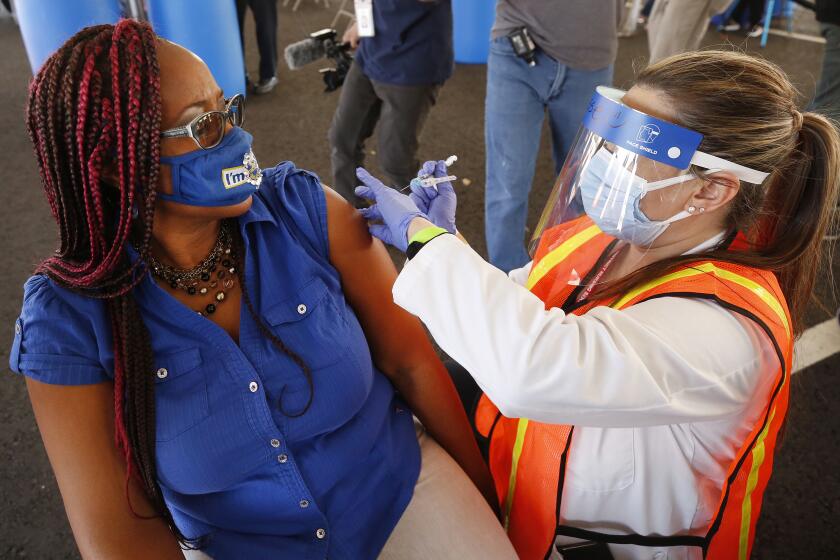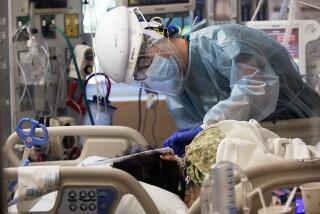New indoor mask mandate begins for Orange County, Inland Empire, San Diego
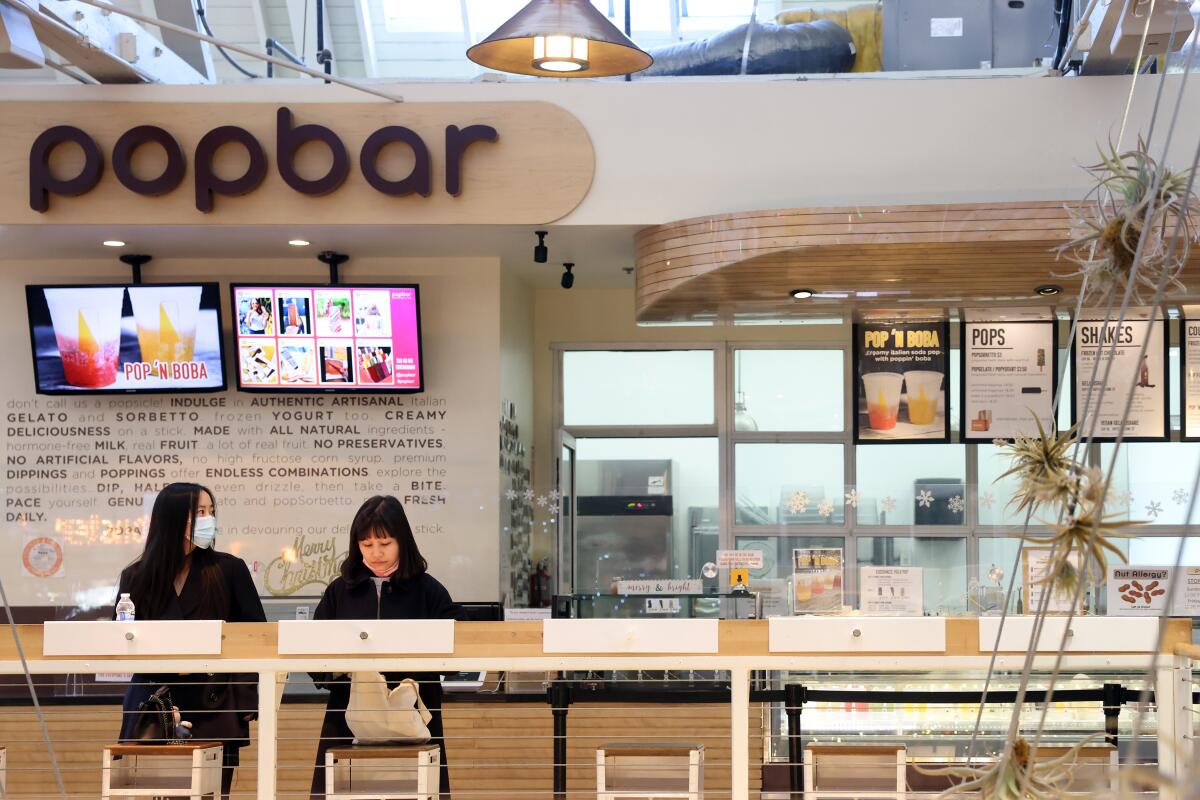
- Share via
California’s new mask mandate takes effect Wednesday, requiring face coverings in indoor public setting such as retail businesses and entertainment venues.
The mask order will affect about half the state’s residents, who live in counties that do not already have an indoor mask mandate, including San Diego, Orange, Riverside and San Bernardino counties, as well as wide swaths of the Central Valley and rural Northern California.
The order will last one month and expires on Jan. 15. It will not result in changes in Los Angeles or Ventura counties, which already have an indoor mask order.
“As expected, we are beginning to experience a rise in cases, not only here in Orange County but statewide and nationwide, due to increased holiday gatherings and travel,” Dr. Clayton Chau, Orange County’s Health Officer said in a statement. “We support the State’s latest measures intended to bring additional protection to us all and our loved ones. As I mentioned before, we have all the tools available to fight the spread of COVID-19 and its variants, through vaccination, testing and prevention measures including masking.”
Businesses are now adjusting to the changes.
The U.S. has the highest number of COVID deaths as it nears the end of an especially difficult year for families who lost loved ones in the pandemic.
Junior Leoso, owner of Pacific Beach Training, said that he never took down the signs and documentation from the first time mask mandates went into effect.
He heard about the new mandate a day before it took effect.
“I’m always caught in the middle because I understand the reasoning,” Leoso said of the mask mandate. “I believe that the frustration comes from the sense that maybe this isn’t going away. And, you know, it doesn’t feel like this is the progression towards the clear. It almost feels like a regression in a lot of ways.”
During the pandemic, gyms and fitness centers have had strict sanitation requirements and rules as businesses opened back up. Leoso said they have done the best they can to invest in a clean environment for their members, and they continue to offer outdoor workouts as an option.
He said they will do their part to protect their community and follow the new guidelines for the changing environment.
Though still dealing with a surge in Delta variant cases, the European Union expects Omicron to become the dominant coronavirus strain in a month.
“The bottom line is that we all need to do what’s best for our small little bubbles, and I think if that means cases are going up, and we think we can stop that by wearing masks indoors, then so be it. But on the flip side of that coin, it just feels like, ‘Dang, I thought we were past that point,’” he said.
Evidence makes it clear that masks help reduce transmission of the virus, said Dr. Mark Ghaly, California’s health and human services secretary. The coronavirus is airborne and can spread from infected people even if they are asymptomatic.
“Even a 10% increase in indoor masking can reduce case transmission significantly,” Ghaly said. “Wearing a mask is going to be one of the most important things to help us get through this period of uncertainty.”
COVID-19 cases in California have risen by almost 50% in the last 2½ weeks, and hospitalizations for the virus are up by nearly 15%. County health officials across the state said they suspect those numbers could reflect the start of a winter jump in cases.
Among Los Angeles County residents age 5 and up, only 56% of Black residents have received at least one dose of vaccine, as have 61% of Latino residents.
The U.S. Centers for Disease Control and Prevention ranks California as having a high level of transmission of the coronavirus, the worst classification on the federal agency’s four-tier scale.
California is approaching a statewide COVID-19 death toll of 75,000.
The national death total is more than 800,000, according to Johns Hopkins University.
Sisson writes for the San Diego Union-Tribune.
More to Read
Sign up for Essential California
The most important California stories and recommendations in your inbox every morning.
You may occasionally receive promotional content from the Los Angeles Times.
